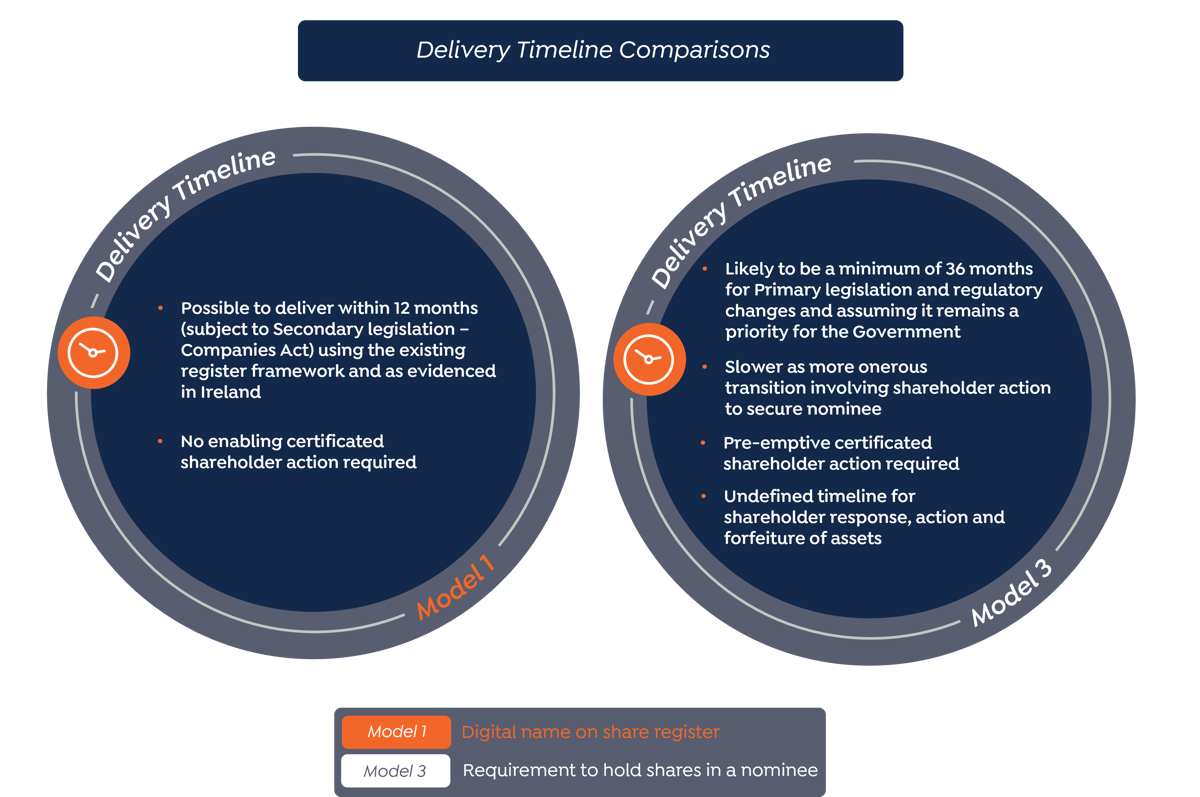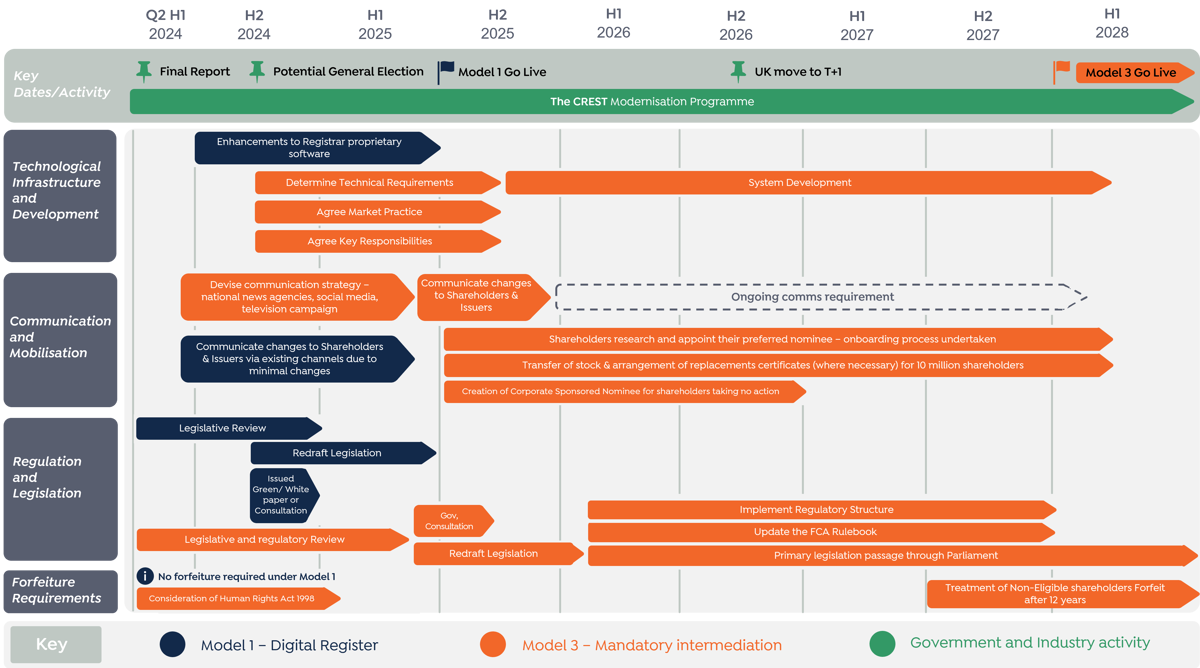We'll also set a temporary cookie to hide this notice.
28
Mar
2024
Lee Cooper | Industry and Strategy Lead
In this series of articles, Lee Cooper, Industry and Strategy Lead at Link Group, looks at the forthcoming digitisation of the UK shareholding framework, and sets out his considerations around the implications of proposed digitisation models, and which will be most suitable for companies, practitioners, and shareholders.
As part of their remit to modernise the UK’s shareholding framework the Digitisation Taskforce is looking at solutions to removing paper, including certificates, from share ownership or the transfer process, digitising communications as well as other processes. The Taskforce issued an Interim Report in 2023 and invited comments from stakeholders across the financial services sector on the proposals they made to dematerialise the market.
The main proposal from the Taskforce was that current certificated shareholders (circa. 10 million individuals) would need to transfer their holdings into an intermediated model administered by a nominee. The details of shareholders would no longer be held by the issuer companies but by external nominees such as those administered by stockbrokers. This potential future model has been called the intermediated model or model 3.
The other main model for future dematerialisation of shares that was considered, but rejected, by the Taskforce, was based on removing paper share certificates but leaving the shareholder records on the existing share registers of the issuer companies and removing other barriers to digitisation. This has been called the digital register or model 1.
The proposals are not detailed yet, but we thought it would be helpful to try and appreciate the implications of the changes and how the changes might impact shareholders, issuer companies and the securities market as a whole.
In our previous two articles we looked at the implications for shareholders and issuer companies of moving to the intermediated model compared to the digital register model and the possible costs of these changes, here we look at the complexity of any transition from where we are now and the possible timeline for both models.
Transition and delivery timeline
Successfully moving to a dematerialised securities market that reduces the need for paper and increases the use of digital communications is the ultimate aim of all those involved in operating the market. We all want to see more secure, efficient, and lower cost share transactions but how we get from where we are today to a model that delivers the optimal outcome for investors, issuer companies and all those in the market will be crucial. Complexity, cost, legislation, and technology will all have a part to play in dictating how long this transition will take and what the costs will be.
Below is a snapshot of the matters that will need to be considered in the transition process for either model.
Our assessment is that the length and complexity of the transition, given the above factors, under the digital register model will be significantly shorter than if the intermediated model was pursued. Please see the slides below with our assessment of the possibilities.


These views are based on our assessment of the information provided so far by the Digitisation Taskforce and may well change once we know more about the proposals following the Taskforce’s recommendations to government due by spring 2024.
We would welcome your views on our assessment and look forward to the final report from the Digitisation Taskforce. You can also read the part 1 and part 2 of this article series to understand other implications which we have been considering around digitisation.
If you’ve found this article useful, and want to share your thoughts with our experts – please get in touch.